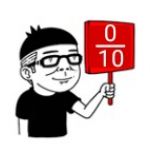Not a member of Pastebin yet?
Sign Up,
it unlocks many cool features!
- \documentclass{article}
- % Comment the following line to NOT allow the usage of umlauts
- \usepackage[utf8]{inputenc}
- % Uncomment the following line to allow the usage of graphics (.png, .jpg)
- %\usepackage[document]{ragged2e}
- \usepackage[a4paper, lmargin=1.5cm, rmargin=1.5cm, bottom=1.5cm]{geometry}
- %\usepackage{graphicx}
- \usepackage{color}
- \usepackage{amsmath}
- \usepackage[T1]{fontenc}
- \usepackage{amsfonts} \usepackage{amssymb}
- \usepackage{cancel}
- \usepackage{fancybox}
- \usepackage[all]{xy}
- \usepackage{pst-all}
- \usepackage{tikz}
- \usepackage{gnuplottex}
- \tikzset{flippedeventlabel/.append style={align=center}}
- \usetikzlibrary{matrix.skeleton}
- \usetikzlibrary[shapes,arrows,positioning,fit,backgrounds,intersections,shadows,calc]
- \usetikzlibrary{positioning} \usetikzlibrary{decorations.text} \usetikzlibrary{decorations.pathmorphing}
- %Paquete para Referencias Web
- \usepackage [colorlinks=true,linkcolor=green! 40!blue,citecolor=green!40!blue,filecolor=magenta, urlcolor= blue]{hyperref}
- %Paquete de estilo de Referencias
- \urlstyle{same}
- \usepackage{pgfplots}
- \pgfplotsset{compat=newest}
- \usetikzlibrary{datavisualization} \usetikzlibrary[shapes,arrows,positioning,fit,backgrounds,intersections,shadows,calc,datavisualization.formats.functions]
- \usetikzlibrary{patterns}
- \usepackage{circuitikz}
- \title{UN CIRCUITO SENCILLO CON\\ \bf\texttt{circuitikz}}
- \author{Nimrod Rodríguez\\ \small{nimrodga@hotmail.com}}
- \date{}
- % Start the document
- \begin{document}
- \maketitle
- \begin{circuitikz} [orange,information text/.style={rounded corners,fill=blue!18,inner sep=1ex}]
- \draw node [rotate=45] at (0,1) {\bf\color{blue}{\tiny{relay}}};
- \draw (0,0) to[twoport](0,2);
- \draw (0.5,1) to[short, -o](1.3,1);
- \draw [-, black](-0.5,1) to[short, -o](-1.1,1) to (-1.1,-3);
- \draw node at (0,1.3) {\color{red}{\tiny{30}}};
- \draw node at (0,0.7) {\color{red}{\tiny{87}}};
- \draw node at (0.3,1) {\color{red}{\tiny{85}}};
- \draw node at (-0.3,1) {\color{green!30!blue}{\tiny{86}}};
- \draw [red] (0,2) to (-1.7,2) to [fuse,l_=\SI{10}{Amp}, fill=red] (-1.7,0.5) to[battery2= , invert={+}{-}, l_=\SI{12}{V}, black] (-1.7,-3)node[ground, black
- ]{-};
- \draw [-, black] (-1.7,-1.4) to (-1.7,-3);
- \draw [->](4,3.25) to (1.3,3.25) to [switch, l_={Interruptor}](1.3,2.5) to (1.3,1) ;
- \draw (0.5,-1) [lamp,yellow];
- \draw (0,0) to (0,-1) to (1,-1) to [lamp,l_=\SI{55}{W}, fill=yellow] (1,-3);
- \draw (1,-1) to (2.8,-1) to [lamp,l_=\SI{55}{W}, fill=yellow] (2.8,-3);
- \draw node at (-1.5,-0.9) {$\textcolor{red}{+}$};
- \draw node at (-1.5,-1.6) {$\textcolor{blue}{-}$};
- \draw node at (-2.5,0.9) {\textcolor{red}{Seguro}};
- \draw node at (3,-1.2) {$i_0$};
- \draw node at (1.2,-1.2) {$i_0$};
- \draw [black](2.8,-3) to (1,-3) to (-1.7,-3);
- \draw node at (-1.7,-3.8) {Masa};
- \draw (4,2.5) circle [radius=0.75cm, green!25] node[very thick, black] {|};
- \draw node at (3.3,2.8) {\bf\color{black}{\tiny{•}}};
- \draw node at (3.6,2.6) {\bf\color{black}{\tiny{ACC}}};
- \draw node at (4,3.25) {\bf\color{black}{\tiny{•}}};
- \draw node at (4,3.1) {\bf\color{black}{\tiny{IGN}}};
- \draw node at (4.5,3.05) {\bf\color{black}{\tiny{•}}};
- \draw node at (4.35,2.8) {\bf\color{black}{\tiny{start}}};
- %Flujos
- \draw [->,red] (3,3.4) to (2,3.4);
- \draw [->,red] (-1,2.2) to (-0.5,2.2);
- \draw [->,red] (-2,-1) to (-2,-0.5);
- \draw [->,red] (0.2,0) to (0.2,-0.5) node [right]{\color{blue}{$i$}};
- \draw [->, black] (1,-3.2) to (0.6,-3.2);
- %Leyenda de cableado
- \draw [-,red,very thick](-1.5,-4.5) to (-1,-4.5);
- \draw (0,-4.5) node {\color{black}{Calibre 12}};
- \draw [-, orange,very thick](-1.5,-5) to (-1,-5);
- \draw (0,-5) node {\color{black}{Calibre 20}};
- \draw[xshift=1.85cm,black!90]
- node[right=3.2cm,text width=7cm,information text]
- {
- \begin{minipage}{6.8cm}
- \begin{center}
- \shadowbox{\texttt{\textcolor{blue}{\LARGE{circuitikz}}}} \\
- \end{center}
- \textcolor{blue}{\LARGE{L}}a figura muestra la conexión de dos bulbos o bombillos neblineros de 55 watts cada uno, como los del tipo H-11 comunmente utilizado, vía un relé (bobina) tipo comercial, cuya figura (la de un inductor en la librería \texttt{\textcolor{blue!60!red}{\textbackslash usepackage}\textcolor{blue}{\{circuitikz\}}} aparece con la numeración de terminales, la cual normalmente traen como guía de conexión. El calibre del cableado es según la tabla de ampacidad y esta se utiliza a partir de los valores en las relaciones
- \begin{align*}
- V =iR, \hspace{0.5cm} P = i_0V,
- \end{align*}
- entendiéndose que en ambas la tensión\linebreak $V$ = 12 volts, mientras que la resistencia $R$ en la primera, es la del conductor que soporta $i$ amperios, que es la corriente combinada o resultante del consumo en las lámparas en paralelo de $i_0$ amperios de corriente y potencia $P$ = 55 watts cada una. Solo hay que recordar que la medida $AWG$ es, como suele decirse, \textbf{\textit{contra-intuitiva}}, pues cuanto mayor es el calibre, más delgado es cable.
- \end{minipage}
- };
- \end{circuitikz}
- \end{document}
Add Comment
Please, Sign In to add comment

